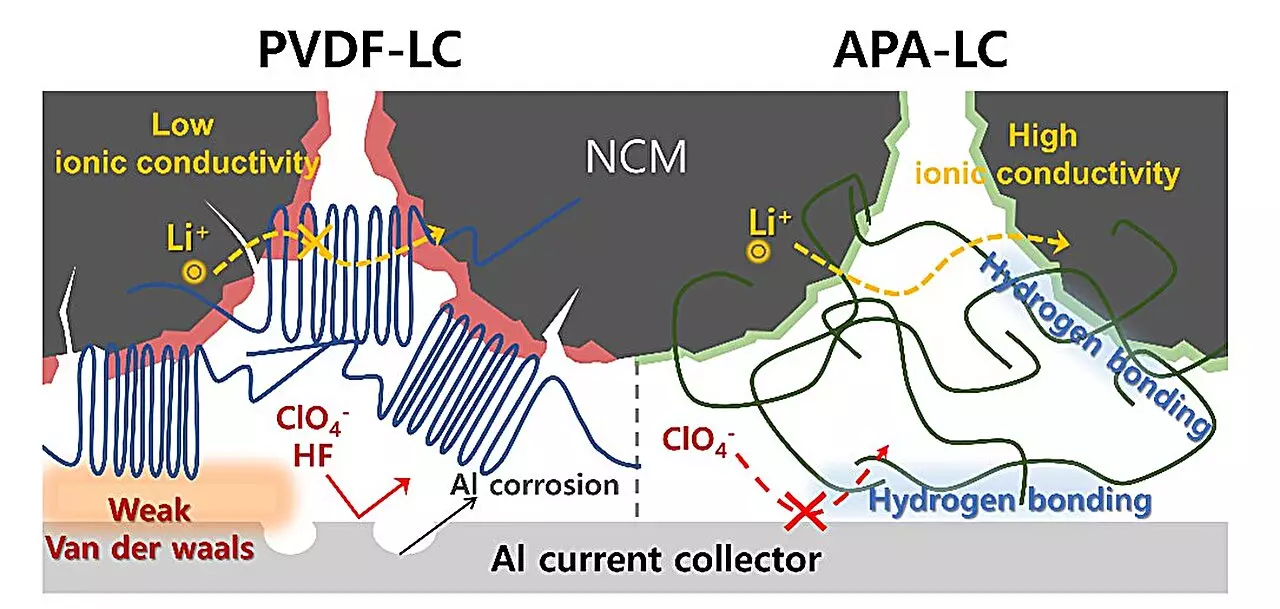As the world pivots toward sustainable energy solutions, the necessity for environmentally friendly materials in battery production has never been more pressing. Traditional lithium-ion batteries, which have been the backbone of modern portable electronics and electric vehicles, predominantly utilize fluorinated compounds. These compounds, notably polyvinylidene fluoride (PVDF) and lithium hexafluorophosphate (LiPF6), while efficient, bring with them significant environmental liabilities. As concerns over toxic emissions—specifically highly dangerous hydrogen fluoride—grow, it becomes essential to seek alternative methods and materials that align with global sustainability goals.
The environmental impact of traditional battery materials cannot be overstated. The impending regulations from bodies like the European Union, targeting per- and polyfluoroalkyl substances (PFAS), heighten the urgency for innovation within battery technology. Researchers are now tasked with developing solutions that not only perform at par with existing systems but also adhere to stricter environmental standards. This highlights the importance of the research advancements emerging from institutions focused on eco-conscious engineering.
Recent research led by a collaborative team from POSTECH and Hansol Chemical presents a promising breakthrough: the introduction of a fluorine-free binder and electrolyte for lithium-ion batteries. By developing a completely new energy-storage system known as the “APA-LC” system, the researchers aimed to address both performance and environmental factors. Unlike conventional systems, the APA-LC combines a non-fluorinated aromatic polyamide (APA) binder with a lithium perchlorate (LiClO4) electrolyte, successfully eliminating the need for any toxic fluorinated components.
This innovative approach is particularly noteworthy as it combines sustainability with enhanced battery performance. The APA binder contributes to not only keeping the cathode’s active material securely attached to the current collector but also mitigates electrode corrosion. This improvement is critical, as it extends the overall lifespan of the battery, positioning the APA-LC system with much-needed advantages over traditional systems.
The modifications brought by the APA-LC system have borne tangible results in performance enhancements. The research team demonstrated that this novel system maintained a remarkable 20% higher capacity retention after 200 cycles at a rapid charge/discharge rate of 1 C compared to the PVDF-LP counterpart. This performance was tested within a voltage range of 2.8–4.3 V in a coin cell format, which is essential for the rapid adoption of new battery technologies in consumer applications.
Furthermore, the introduction of lithium chloride (LiCl) and lithium oxide (Li2O) in the LC electrolyte serves to reduce energy barriers, fostering improved ion migration and enhancing lithium diffusion. These enhancements translate into superior output performance, showcasing that the APA-LC system not only meets but exceeds the established benchmarks of conventional lithium-ion batteries.
A Glimpse into the Future of Battery Technology
As the research team continues to refine this technology, the implications for the battery industry are significant. The successful application of the APA-LC system in producing a high-capacity pouch cell with outstanding discharge capabilities sets a precedent for future developments. Notably, the high-capacity 1.5 Ah pouch cell showcased impressive performance during fast-charging trials, establishing it as a viable contender in the competitive battery market.
Professor Soojin Park, a key figure behind this research, stressed the importance of transitioning from fluorinated systems to sustainable alternatives without compromising on performance. The acknowledgment of this achievement, alongside comments from industry executives, highlights not only the technological advancements but also the business opportunities created by these eco-friendly innovations. By addressing the environmental and regulatory considerations, companies are poised to capture and solidify their positions in the evolving light of battery technology.
The advancement of non-fluorinated battery systems encapsulates the intersection of innovation and responsibility. As the industry seeks to align with sustainability goals, research such as this signifies a monumental shift, paving the way for greener and more efficient energy storage solutions. A future where batteries can be both high-performing and environmentally friendly is not just a goal; it is rapidly becoming a tangible reality.


Leave a Reply